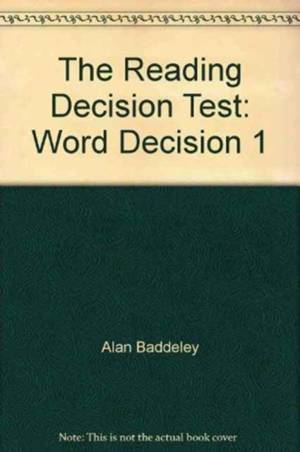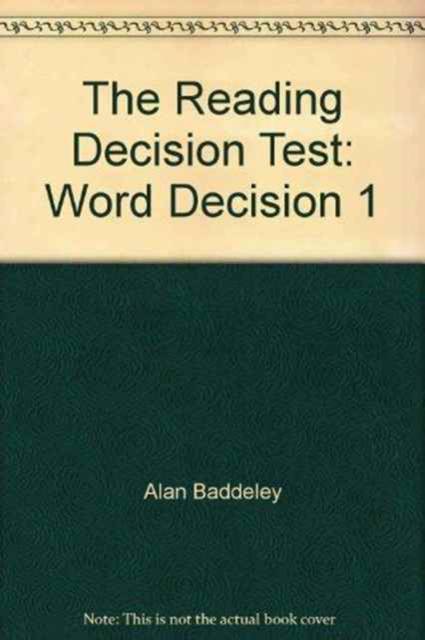
- Retrait gratuit dans votre magasin Club
- 7.000.000 titres dans notre catalogue
- Payer en toute sécurité
- Toujours un magasin près de chez vous
- Retrait gratuit dans votre magasin Club
- 7.000.0000 titres dans notre catalogue
- Payer en toute sécurité
- Toujours un magasin près de chez vous
The Reading Decision Test
Word Decision 1
Alan Baddeley, Susan Gathercole, Alice Spooner
Livre broché | Anglais
44,45 €
+ 88 points
Format
Description
In order to read sentences, children must first be able to decode the individual words. Failure at this stage will lead to later problems, even in the case of an intelligent child who has good comprehension skills. The Reading Decision Test consists of two tests, The Word Decision Test and The Letter Decision Test, that together provide a rapid and sensitive measure of reading during the early stages of learning, allowing the early detection of children who are having difficulties. There are two versions of each test, which allows the same child to be tested twice in the same session, and also minimises the chance of copying when groups are tested (if alternate children are given different versions of the same test). The Word Decision Test assesses children's ability to make decisions between known meaningful words and nonsense words. This test is suitable for children with a reading age of between five and eleven, and can be given either individually or to a group of children. It takes just four minutes to complete, and gives a reading age for each child. Children whose reading age is clearly below their chronological age can then be tested on The Letter Decision Test to identify whether their problem lies at the letter or word level. This test assesses children's ability to recognise written letters, takes a total of just three minutes and is suitable for children with reading ages between four years and eight years, seven months. The Reading Decision Test also includes an instructor's manual which gives step by-step instructions on how to administer and score the test, as well as providing details of it's standardisation, test-retest reliability and validity. This test will be a valuable tool for researchers in the fields of cognitive, developmental, and educational psychology; facilitating the rapid assessment of word decoding ability in both individuals and groups, and detecting problems during the initial stages of learning to read.
Spécifications
Parties prenantes
- Auteur(s) :
- Editeur:
Contenu
- Nombre de pages :
- 4
- Langue:
- Anglais
Caractéristiques
- EAN:
- 9781841693989
- Date de parution :
- 18-03-04
- Format:
- Livre broché
- Format numérique:
- Trade paperback (VS)
- Poids :
- 816 g

Les avis
Nous publions uniquement les avis qui respectent les conditions requises. Consultez nos conditions pour les avis.






